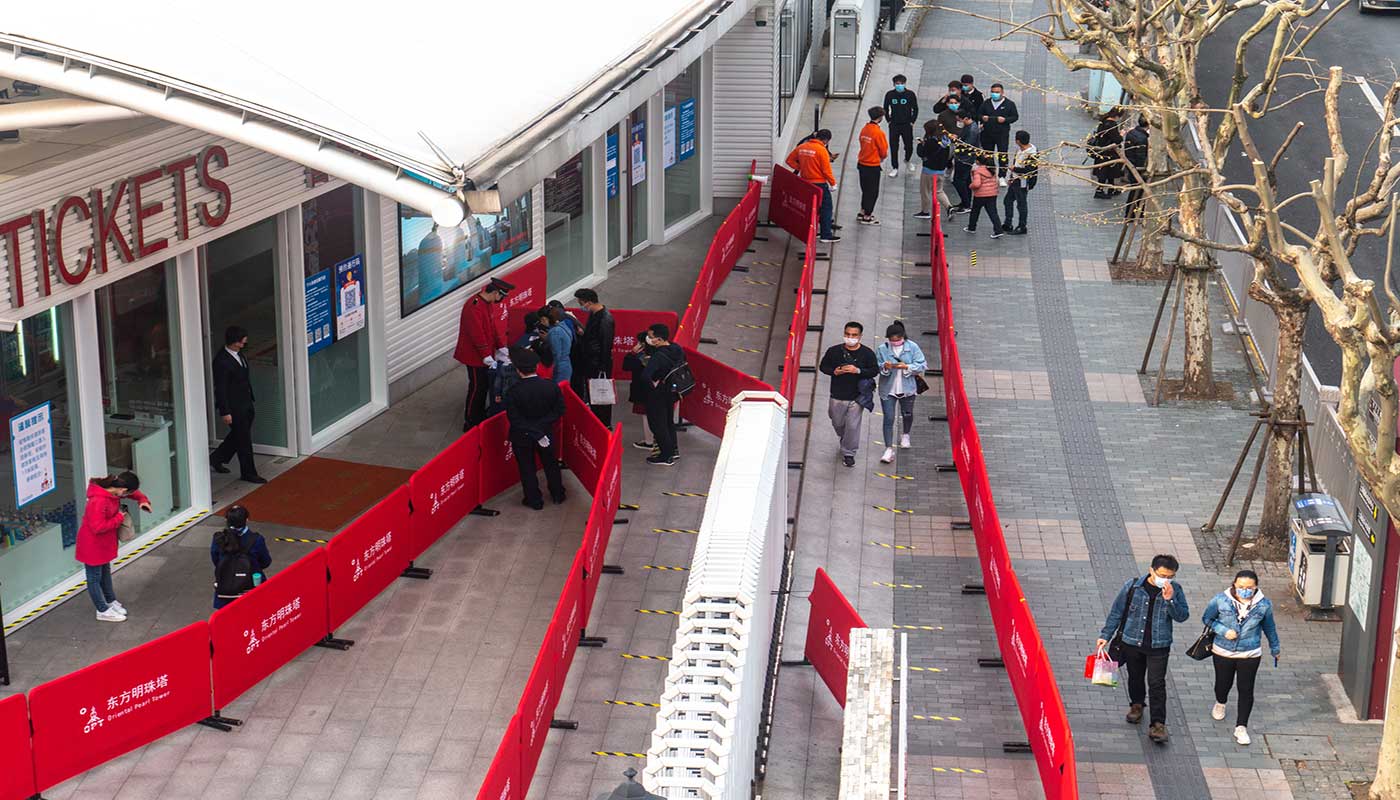
The dramatic cost in human capital of the extremely contagious, life-altering novel coronavirus has been well documented, but the pandemic has also extracted a heavy toll on China's economy. The service industry, with total losses of more than ¥1 trillion spread across catering, transportation and tourism, has been particularly impacted.
In the catering sector, to prevent the virus from spreading due to gatherings of people, nearly all dinner parties of various types were canceled during the Spring Festival. Moreover, the vast majority of restaurants were forced to close, indefinitely.
Combined with the difficulty in stocking up on food materials, this suspension exerted huge pressure on the cash flow of caterers, causing the revenue of a number of chain catering enterprises to drop sharply during the Spring Festival.

For example, Hai Di Lao Hopot was forced to shutter its 550 restaurants, nationwide, for a period of more than 10 days, starting on January 26. During this time, chain-restaurant giant suffered ¥700 million in income loss and labor costs.
What's more, the Ministry of Commerce's data shows that during the 2019 Spring Festival, retailing and catering operators in China earned a total revenue exceeding ¥1 trillion. If we assume a 50% drop in the income of retailers/caterers for the same holiday in 2020, then these businesses lost ¥500 billion - the equivalent to about 2.3% of China's GDP in the first quarter of 2019.
In the transportation sector, under the nationwide traffic restrictions, traffic revenue and passenger flows at airports, high-speed rail stations and bus stations diminished greatly during the Spring Festival. According to data published by the Ministry of Transport, in the first 30 days (from January 10 to February 8) of the 2020 Spring Festival travel rush, 1.352 billion passengers traveled by railway, road, water or air - 40.0% fewer than the same period last year.
Since the total passenger traffic volume in 2020 Spring Festival was originally estimated to be roughly three billion people, total losses in transportation have likely exceeded ¥150 billion.
In the tourism sector, travel plans of residents were canceled or postponed in large numbers, and group touring services were temporarily forbidden throughout China. The short-term losses will undoubtedly be huge. Indeed, assuming that all revenue channels available to players in this industry in 2019 Spring Festival were completely frozen during the height of the current pandemic, tourism companies have probably lost more than ¥500 billion.
Financial Risks
The pandemic is also giving rise to major liquidity and credit risks among service providers. The liquidity risks stem from catastrophic and complete cash flow depletion that has occurred during a short period. Since they are not the result of typical improper asset/liability management or cash management, these risks are special in nature.
In a time of mounting tension from the virus, small- to medium-sized enterprises (SMEs), in particular, have been deprived of large amounts of income, and have therefore found it very hard to maintain normal operations. Worse still, even during business and production suspensions, these businesses have had to continue to bear fixed costs and pay wages to employees.
Undoubtedly, the drastic decline in operating income and the constant rigid expenditures have put cash constraints on SMEs, causing their liquidity risks to increase rapidly.
Indeed, in a recent COVID-19 survey of 1,435 SMEs jointly conducted by Tsinghua University School of Economics and Management, Peking University HSBC Business School and Beijing SME Integrated Finance Service Co., 35.96% of SMEs indicated they would not survive a business suspension of longer than one month. Nearly one-third of respondents (31.92%) put their endurance limit at two months - with 17.03% at three months and only 9.27% at more than six months.
Recently, Chinese economist Guan Qingyou studied SMEs' liquidity risks quantitatively, with a focus on the SME-dominated over-the-counter market - which included 8856 listed enterprises as of February 6, 2020. After measuring liquidity risks in the pandemic period with a cash/remuneration ratio, he concluded that cash held by about 30% of the SMEs is insufficient to pay employees three-months of wages. This suggests huge liquidity pressure faced by a substantial segment of SMEs in non-operating status.
The list of the sectors most severely disrupted by the pandemic includes hotels, catering, culture, sports, entertainment, wholesale and retail. Since hotels and caterers tend to have fewer monetary resources at their disposal (because of rapid turnover of capital), they presumably have experienced the greatest stress on their cash/remuneration ratios.
For highly-indebted enterprises with maturing debts, the liquidity risks will escalate into credit risks. If the financing environment and external cash flows change unfavorably, there will be issues related to financial continuity that may easily cause breach of contract.
Yu Xiaojian is an associate professor at the School of Economics and Commerce. and vice director of finance and the Financial Engineering Research Center, at South China University of Technology. He has extensive experience in risk management research.
Zeng Wenzheng is a finance research assistant at the Financial Engineering Research Center, South China University of Technology.